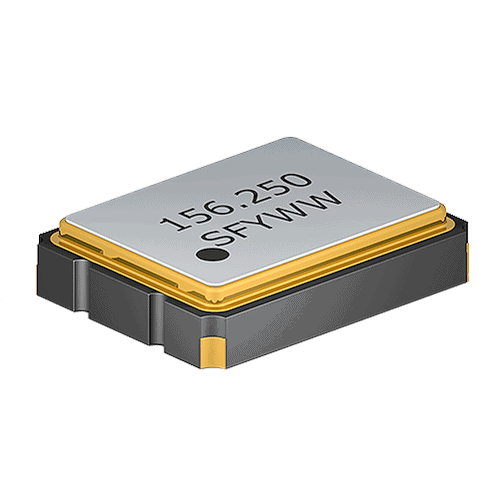| SXO11C | 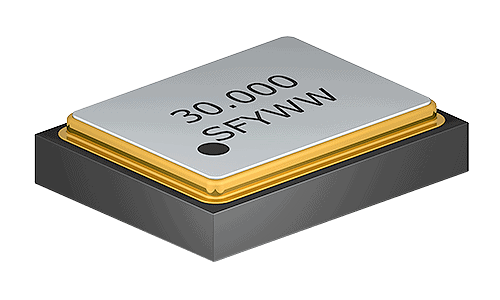 | CMOS | 1.6mm x 1.2mm Ceramic SMD 4 Pad Oscillator | ±20ppm | 1.8V, 2.5V, 3.3V | 1.000MHz - 80.000MHz | 3K | Ultra-Miniature Package |  |
| SAO21C | 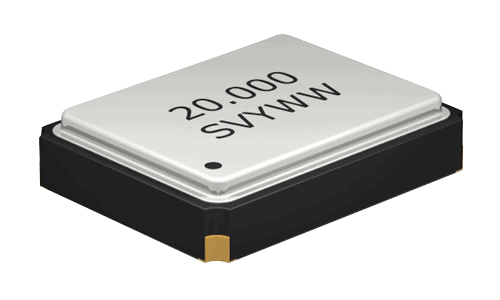 | CMOS | 2.0mm x 1.6mm Ceramic SMD 4 Pad Oscillator | ±30ppm | 1.8V, 2.5V, 3.3V | 32.768kHz, 0.250MHz – 125.000MHz | 3K | AEC-Q100 Compliant |  |
| SXO21C | 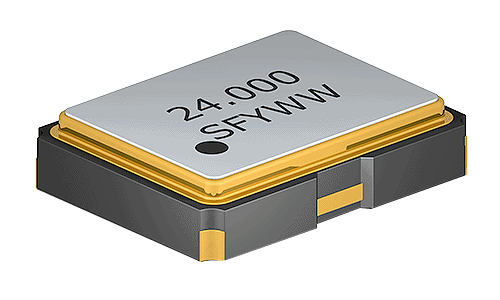 | CMOS | 2.0mm x 1.6mm Ceramic SMD 4 Pad Oscillator | ±20ppm | 1.8V, 2.5V, 3.3V | 1.000MHz - 60.000MHz | 3K | Ultra-Miniature Package |  |
| SAO22C | 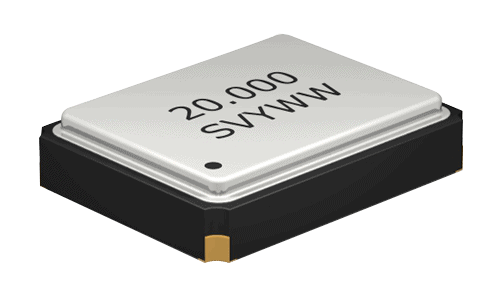 | CMOS | 2.5mm x 2.0mm Ceramic SMD 4 Pad Oscillator | ±30ppm | 1.8V, 2.5V, 3.3V | 32.768kHz, 0.250MHz – 125.000MHz | 3K | AEC-Q100 Compliant |  |
| SXO22C | 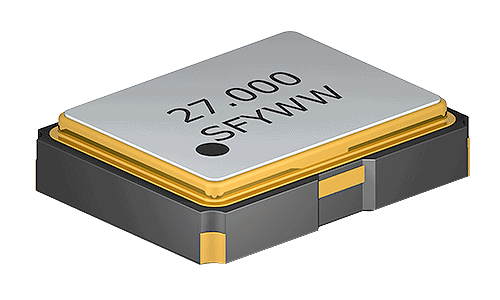 | CMOS | 2.5mm x 2.0mm Ceramic SMD 4 Pad Oscillator | ±20ppm | 1.8V, 2.5V, 3.3V | 32.768kHz, 1.000MMz - 110.000MHz | 3K | Ultra-Miniature Package |  |
| SUO22P | 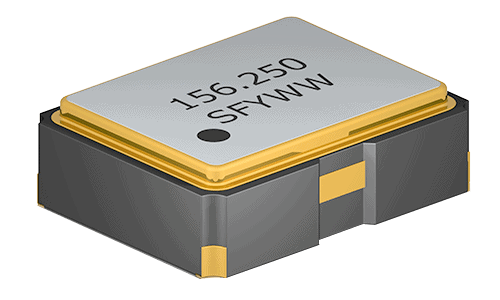 | LVPECL | 2.5mm x 2.0mm Ceramic SMD 6 Pad Oscillator | ±20ppm | 2.5V, 3.3V | 13.500MHz - 156.250MHz | 3K | Ultra Low Jitter |  |
| SUO22L | 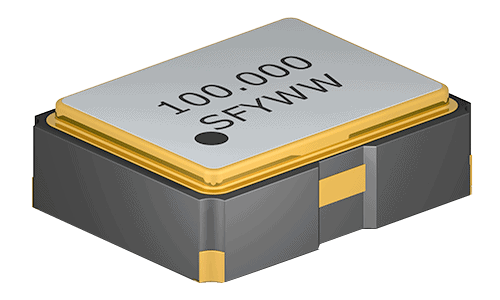 | LVDS | 2.5mm x 2.0mm Ceramic SMD 6 Pad Oscillator | ±20ppm | 1.8V, 2.5V, 3.3V | 13.500MHz - 156.250MHz | 3K | Ultra Low Jitter |  |
| SQG22C | 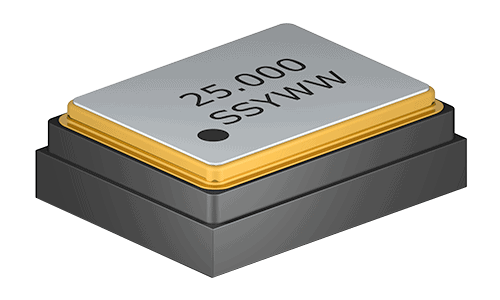 | CMOS | 2.5mm x 2.0mm Ceramic SMD 6 Pad Oscillator | ±20ppm | 2.5V, 3.3V | 8.000MHz - 250.000MHz | 3K | Programmed Oscillator, Low Jitter |  |
| SQG22P | 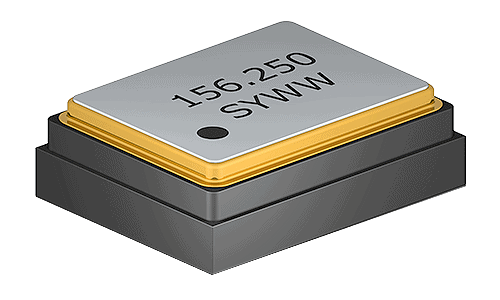 | LVPECL | 2.5mm x 2.0mm Ceramic SMD 6 Pad Oscillator | ±20ppm | 2.5V, 3.3V | 8.000MHz - 1500.000MHz | 3K | Programmed Oscillator, Low Jitter |  |
| SQG22L |  | LVDS | 2.5mm x 2.0mm Ceramic SMD 6 Pad Oscillator | ±20ppm | 2.5V, 3.3V | 8.000MHz - 1500.000MHz | 3K | Programmed Oscillator, Low Jitter |  |
| SQC32C | 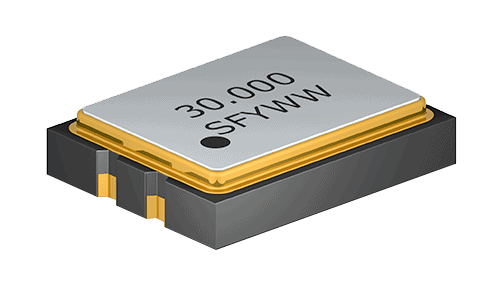 | CMOS | 3.0mm x 2.5mm Ceramic SMD 4 Pad Oscillator | ±20ppm | 3.3V, 5.0V | 1.000MHz - 133.000MHz | 1K | Quick Turn, Programmed Oscillator |  |
| SAO32C | 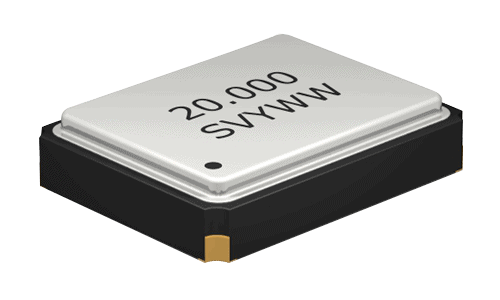 | CMOS | 3.2mm x 2.5mm Ceramic SMD 4 Pad Oscillator | ±30ppm | 1.8V, 2.5V, 3.3V | 32.768kHz, 0.250MHz – 125.000MHz | 3K | AEC-Q100 Compliant |  |
| SEO324 | 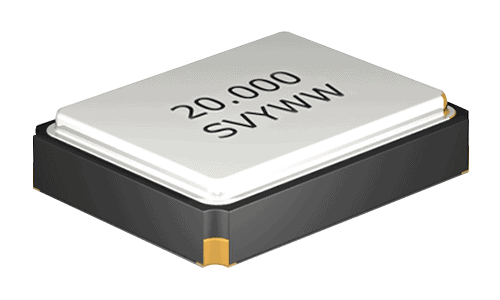 | CMOS | 3.2mm x 2.5mm Ceramic SMD 4 Pad Oscillator | ±20ppm | 1.8V, 2.5V, 3.3V | 1.000MHz – 150.000MHz | 3K | High Stability Over Extended Temperature |  |
| SLO32L | 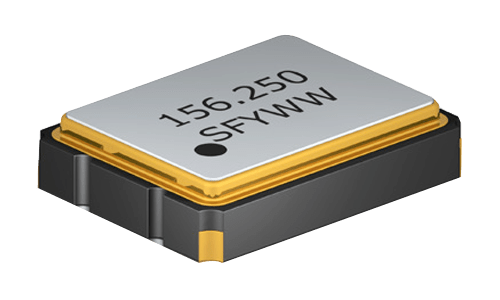 | LVDS | 3.2mm x 2.5mm Ceramic SMD 6 Pad Oscillator | ±20ppm | 1.8V, 2.5V, 3.3V | 100.000MHz - 320.000MHz | 3K | Low current, Ultra Low Jitter |  |
| SLO32P | 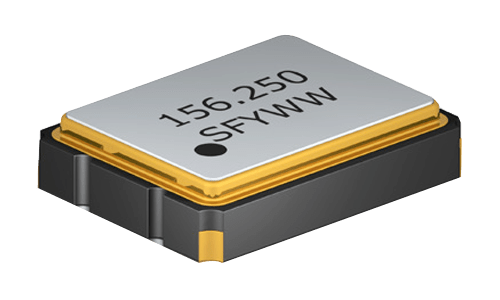 | LVPECL | 3.2mm x 2.5mm Ceramic SMD 6 Pad Oscillator | ±20ppm | 2.5V, 3.3V | 100.000MHz - 320.000MHz | 3K | Low current, Ultra Low Jitter |  |
| SQG32C | 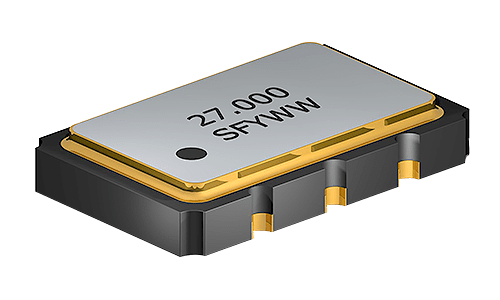 | CMOS | 3.2mm x 2.5mm Ceramic SMD 6 Pad Oscillator | ±20ppm | 2.5V, 3.3V | 8.000MHz - 250.000MHz | 3K | Miniature package, quick turn, low jitter, wide frequency range |  |
| SQG32P | 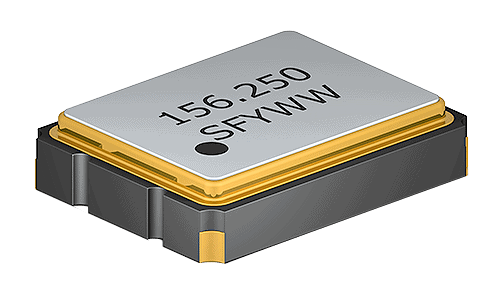 | LVPECL | 3.2mm x 2.5mm Ceramic SMD 6 Pad Oscillator | ±20ppm | 2.5V, 3.3V | 8.000MHz - 1500.000MHz | 3K | Miniature package, quick turn, low jitter, wide frequency range |  |
| SQG32L |  | LVDS | 3.2mm x 2.5mm Ceramic SMD 6 Pad Oscillator | ±20ppm | 2.5V, 3.3V | 8.000MHz - 1500.000MHz | 3K | Miniature package, quick turn, low jitter, wide frequency range |  |
| SSO32C | 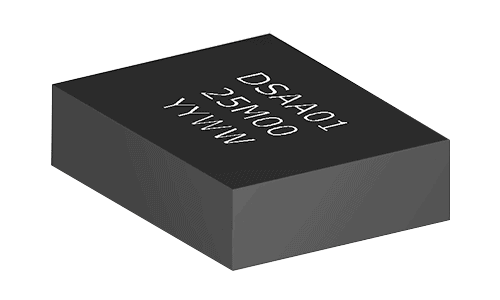 | CMOS | 3.2mm x 2.5mm Silicon SMD 4 Pad Oscillator | ±50ppm | 1.8V, 2.5V, 3.3V | 0.01MHz – 212.500MHz | 2.5K | All Silicon without Quartz and MEMS |  |
| SSO32L |  | LVDS | 3.2mm x 2.5mm Silicon SMD 6 Pad Oscillator | ±50ppm | 1.8V, 2.5V, 3.3V | 0.01MHz – 350.000MHz | 2.5K | All Silicon without Quartz and MEMS |  |
| SSO32P |  | LVPECL | 3.2mm x 2.5mm Silicon SMD 6 Pad Oscillator | ±50ppm | 1.8V, 2.5V, 3.3V | 0.01MHz – 350.000MHz | 2.5K | All Silicon without Quartz and MEMS |  |
| SUO32P | 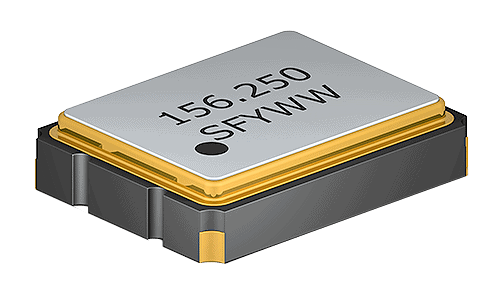 | LVPECL | 3.2mm x 2.5mm Ceramic SMD 6 Pad Oscillator | ±20ppm | 3.3V | 80.000 - 170.000MHz | 3K | Ultra Low Jitter |  |
| SUO32L |  | LVDS | 3.2mm x 2.5mm Ceramic SMD 6 Pad Oscillator | ±20ppm | 3.3V | 80.000 - 170.000MHz | 3K | Ultra Low Jitter |  |
| SXO32C | 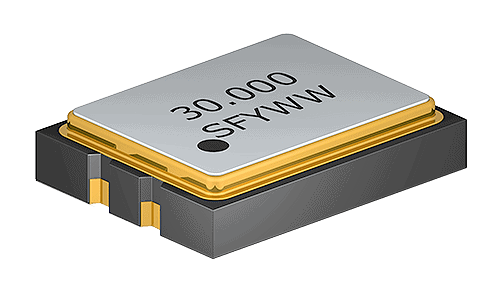 | CMOS | 3.2mm x 2.5mm Ceramic SMD 4 Pad Oscillator | ±20ppm | 1.8V, 2.5V, 3.3V | 32.768kHz, 1.000MHz - 133.000MHz | 3K | Ultra-Miniature Package |  |
| SLO53L | 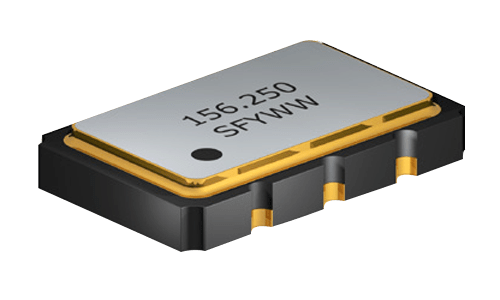 | LVDS | 5.0mm x 3.2mm Ceramic SMD 6 Pad Oscillator | ±20ppm | 1.8V, 2.5V, 3.3V | 100.000MHz - 320.000MHz | 1K | Low current, Ultra Low Jitter |  |
| SLO53P | 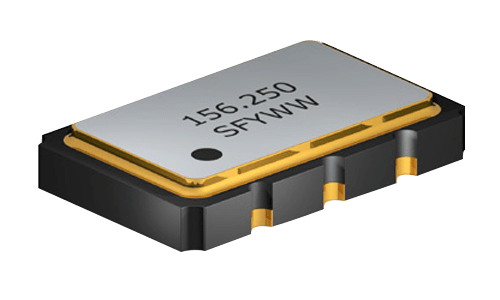 | LVPECL | 5.0mm x 3.2mm Ceramic SMD 6 Pad Oscillator | ±20ppm | 2.5V, 3.3V | 100.000MHz - 320.000MHz | 1K | Low current, Ultra Low Jitter |  |
| SQC53C | 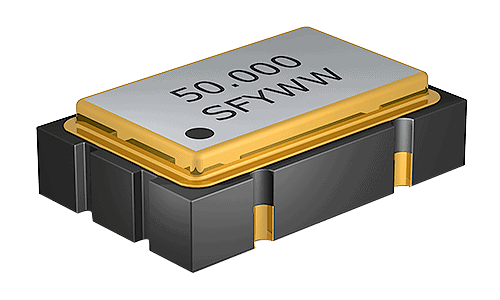 | CMOS | 5.0mm x 3.2mm Ceramic SMD 4 Pad Oscillator | ±20ppm | 3.3V, 5.0V | 1.000MHz - 133.000MHz | 1K | Quick Turn, Programmed Oscillator |  |
| SQG53C |  | CMOS | 5.0mm x 3.2mm Ceramic SMD 6 Pad Oscillator | ±20ppm | 2.5V, 3.3V | 8.000MHz - 250.000MHz | 1K | Programmed Oscillator, Low Jitter |  |
| SQG53P | 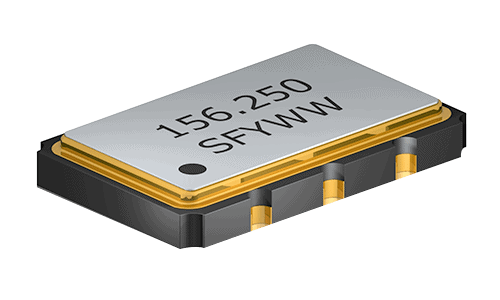 | LVPECL | 5.0mm x 3.2mm Ceramic SMD 6 Pad Oscillator | ±20ppm | 2.5V, 3.3V | 8.000MHz - 1500.000MHz | 1K | Programmed Oscillator, Low Jitter |  |
| SQG53L | 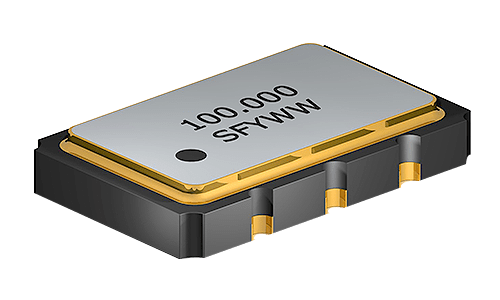 | LVDS | 5.0mm x 3.2mm Ceramic SMD 6 Pad Oscillator | ±20ppm | 2.5V, 3.3V | 10.000MHz - 800.000MHz | 1K | Programmed Oscillator, Low Jitter |  |
| SUO53P | 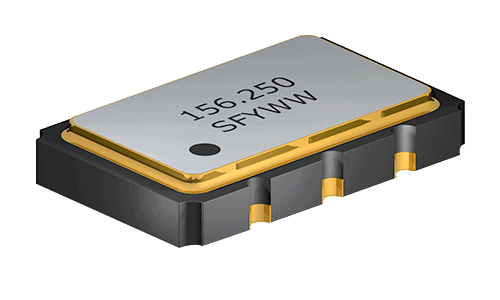 | LVPECL | 5.0mm x 3.2mm Ceramic SMD 6 Pad Oscillator | ±20ppm | 3.3V | 80.0000 - 170.000MHz | 1K | Ultra Low Jitter |  |
| SUO53L |  | LVDS | 5.0mm x 3.2mm Ceramic SMD 6 Pad Oscillator | ±20ppm | 3.3V | 80.0000 - 170.000MHz | 1K | Ultra Low Jitter |  |
| SXO53C | 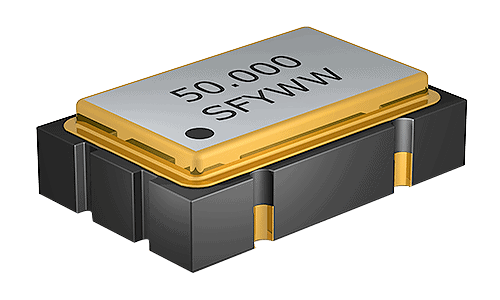 | CMOS | 5.0mm x 3.2mm Ceramic SMD 4 Pad Oscillator | ±20ppm | 1.8V, 2.5V, 3.3V | 32.768kHz, 1.000MHz - 160.000MHz | 1K | Miniature Package |  |
| SXO53P | 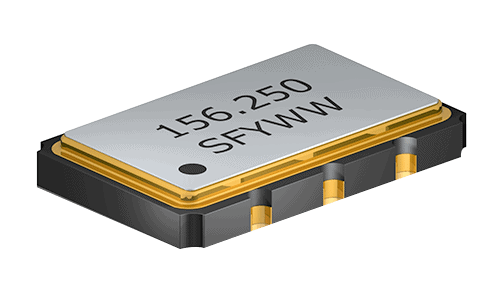 | LVPECL | 5.0mm x 3.2mm Ceramic SMD 6 Pad Oscillator | ±20ppm | 2.5V, 3.3V | 20.000MHz - 160.000MHz | 1K | Low Jitter |  |
| SXO53L | 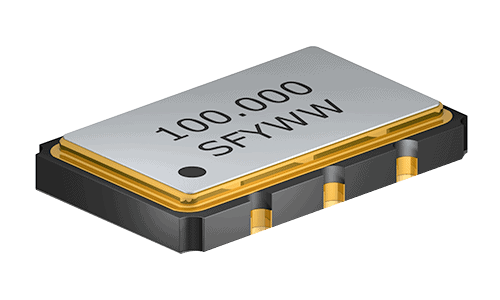 | LVDS | 5.0mm x 3.2mm Ceramic SMD 6 Pad Oscillator | ±20ppm | 2.5V, 3.3V | 20.000MHz - 160.000MHz | 1K | Low Jitter |  |
| SXO53H | 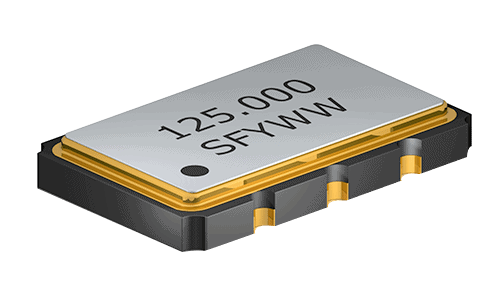 | HCSL | 5.0mm x 3.2mm Ceramic SMD 6 Pad Oscillator | ±25ppm | 2.5V, 3.3V | 100MHz, 125MHz | 1K | Low Jitter, Miniature Package |  |
| SLO75L | 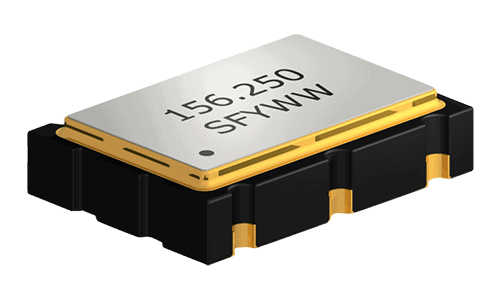 | LVDS | 7.0mm x 5.0mm Ceramic SMD 6 Pad Oscillator | ±20ppm | 1.8V, 2.5V, 3.3V | 100.000MHz - 320.000MHz | 1K | Low current, Ultra Low Jitter |  |
| SLO75P |  | LVPECL | 7.0mm x 5.0mm Ceramic SMD 6 Pad Oscillator | ±20ppm | 2.5V, 3.3V | 100.000MHz - 320.000MHz | 1K | Low current, Ultra Low Jitter |  |
| SQG75C |  | CMOS | 7.0mm x 5.0mm Ceramic SMD 6 Pad Oscillator | ±20ppm | 2.5V, 3.3V | 8.000MHz - 250.000MHz | 1K | Programmed Oscillator, Low Jitter |  |
| SQG75P | 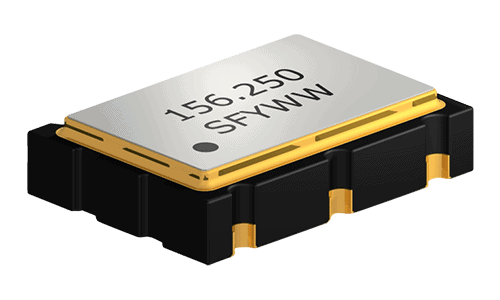 | LVPECL | 7.0mm x 5.0mm Ceramic SMD 6 Pad Oscillator | ±20ppm | 2.5V, 3.3V | 8.000MHz - 1500.000MHz | 1K | Programmed Oscillator, Low Jitter |  |
| SQG75L | 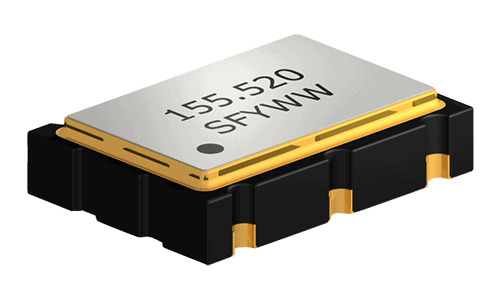 | LVDS | 7.0mm x 5.0mm Ceramic SMD 6 Pad Oscillator | ±20ppm | 2.5V, 3.3V | 8.000MHz - 1500.000MHz | 1K | Programmed Oscillator, Low Jitter |  |
| SQC75C | 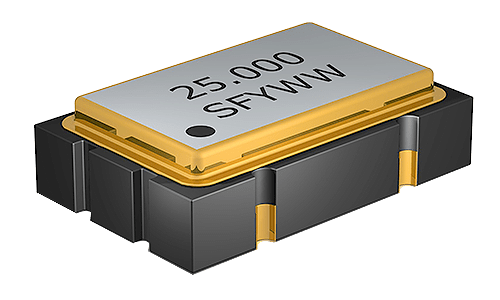 | CMOS | 7.0mm x 5.0mm Ceramic SMD 4 Pad Oscillator | ±20ppm | 3.3V, 5.0V | 1.000MHz - 133.000MHz | 1K | Quick Turn, Programmed Oscillator |  |
| SUO75P | 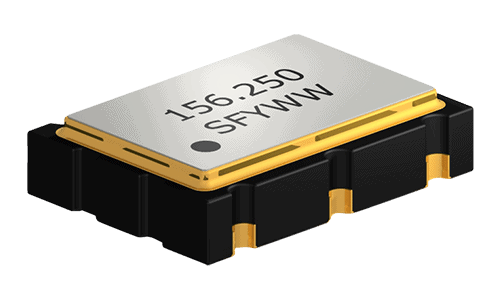 | LVPECL | 7.0mm x 5.0mm Ceramic SMD 6 Pad Oscillator | ±20ppm | 3.3V | 80.000 - 170.000MHz | 1K | Ultra Low Jitter |  |
| SUO75L | 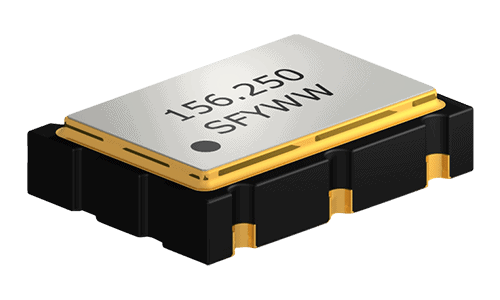 | LVDS | 7.0mm x 5.0mm Ceramic SMD 6 Pad Oscillator | ±20ppm | 3.3V | 80.000 - 170.000MHz | 1K | Ultra Low Jitter |  |
| SXO75C | 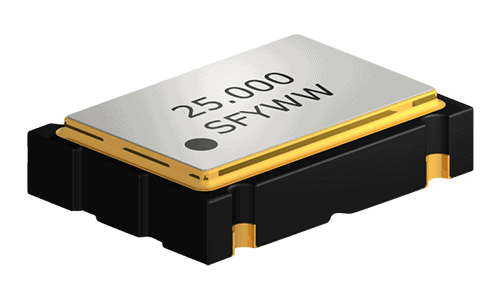 | CMOS | 7.0mm x 5.0mm Ceramic SMD 4 Pad Oscillator | ±20ppm | 1.8V, 2.5V, 3.3V | 32.768kHz, 1.000MHz - 200.000MHz | | Standard Package |  |
| SXO75P | 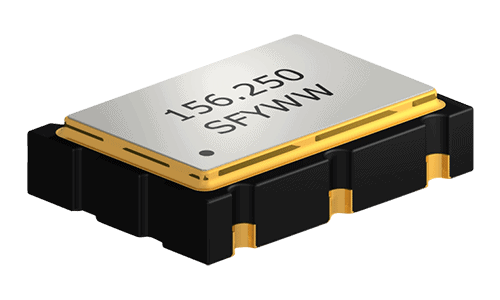 | LVPECL | 7.0mm x 5.0mm Ceramic SMD 6 Pad Oscillator | ±20ppm | 2.5V, 3.3V | 20.000MHz - 260.000MHz | 1K | Low Jitter, Wide Frequency Range. |  |
| SXO75L | 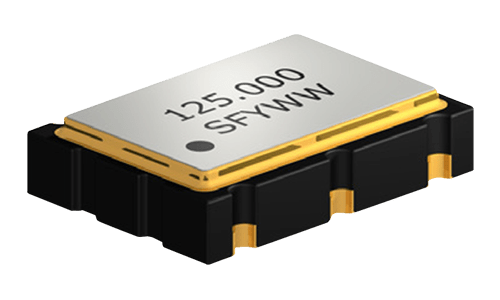 | LVDS | 7.0mm x 5.0mm Ceramic SMD 6 Pad Oscillator | ±20ppm | 2.5V, 3.3V | 20.000MHz - 260.000MHz | 1K | Low Jitter, Wide Frequency Range |  |
| SXO75H | 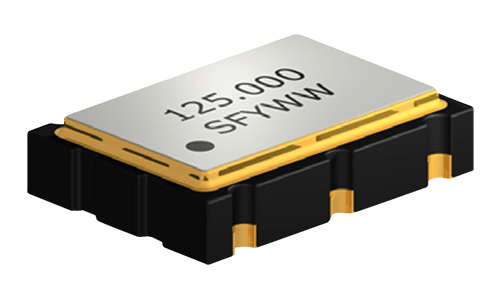 | HCSL | 7.0mm x 5.0mm Ceramic SMD 6 Pad Oscillator | ±25ppm | 2.5V, 3.3V | 100MHz, 125MHz | 1K | Low Jitter |  |
| SXOHSC | 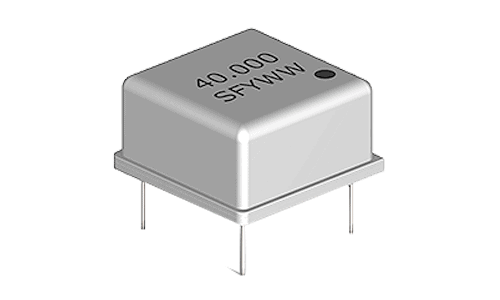 | CMOS/TTL | 13.2mm x 13.2mm 8-PIN DIP Oscillator | ±20ppm | 1.8V, 2.5V, 3.3V, 5.0V | 32.768kHz - 155.520MHz | N/A | Wide Frequency Range |  |
| SXOPJC | 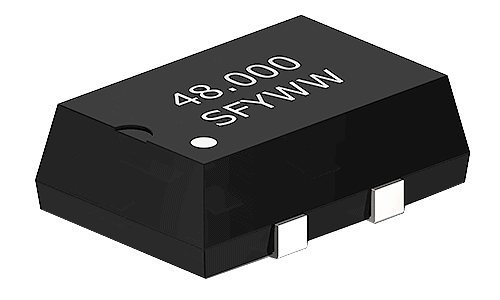 | CMOS | 14.0mm x 9.8mm Plastic SMD J-Lead Oscillator | ±20ppm | 3.3V, 5.0V | 1.000MHz - 125.000MHz | 1K | Plastic J-Lead Package |  |
| SQCPJC | 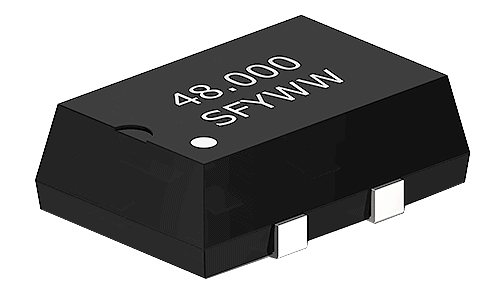 | CMOS | 14.0mm x 9.8mm Plastic SMD J-Lead Oscillator | ±20ppm | 3.3V, 5.0V | 1.000MHz - 133.000MHz | 1K | Quick Turn, Programmed Oscillator, J-Lead package |  |
| SXOFSC | 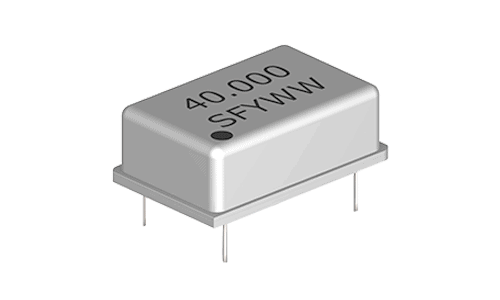 | CMOS/TTL | 20.7mm x 13.1mm 14-PIN DIP Oscillator | ±20ppm | 2.5V, 3.3V, 5.0V | 32.768kHz - 150.000MHz | N/A | Wide Frequency Range |  |
| SUO22C | 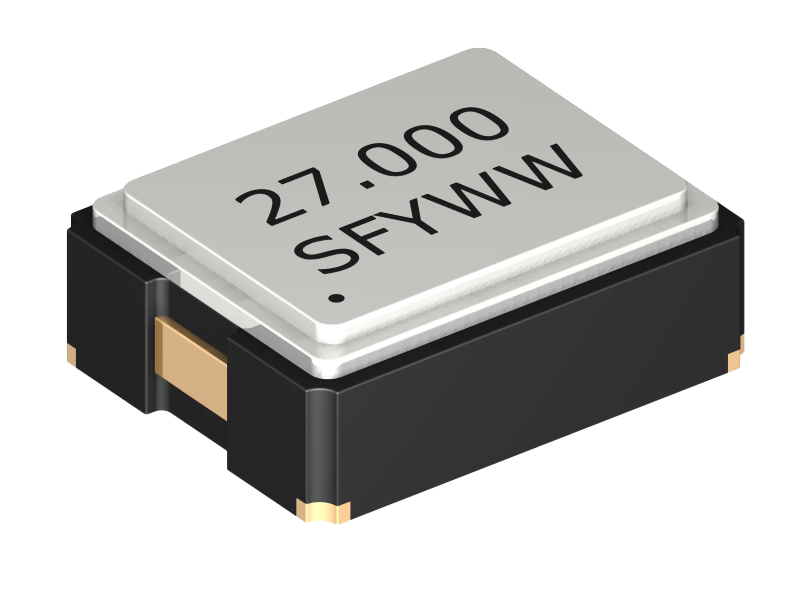 | CMOS | 2.5mm x 2mm Ceramic SMD 4 Pad Oscillator | ±20ppm | 1.8V, 2.5V, 3.3V | 20.000MHz - 50.000MHz | 3K | Ultra-low Jitter for Hi-Fi Audio |  |
| SUO32C |  | CMOS | 3.2mm x 2.5mm Ceramic SMD 4 Pad Oscillator | ±20ppm | 1.8V, 2.5V, 3.3V | 20.000MHz - 50.000MHz | 3K | Ultra-low Jitter for Hi-Fi Audio |  |
